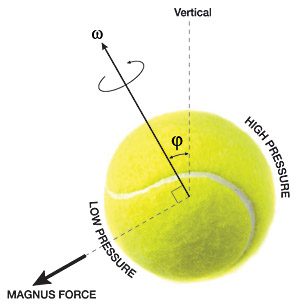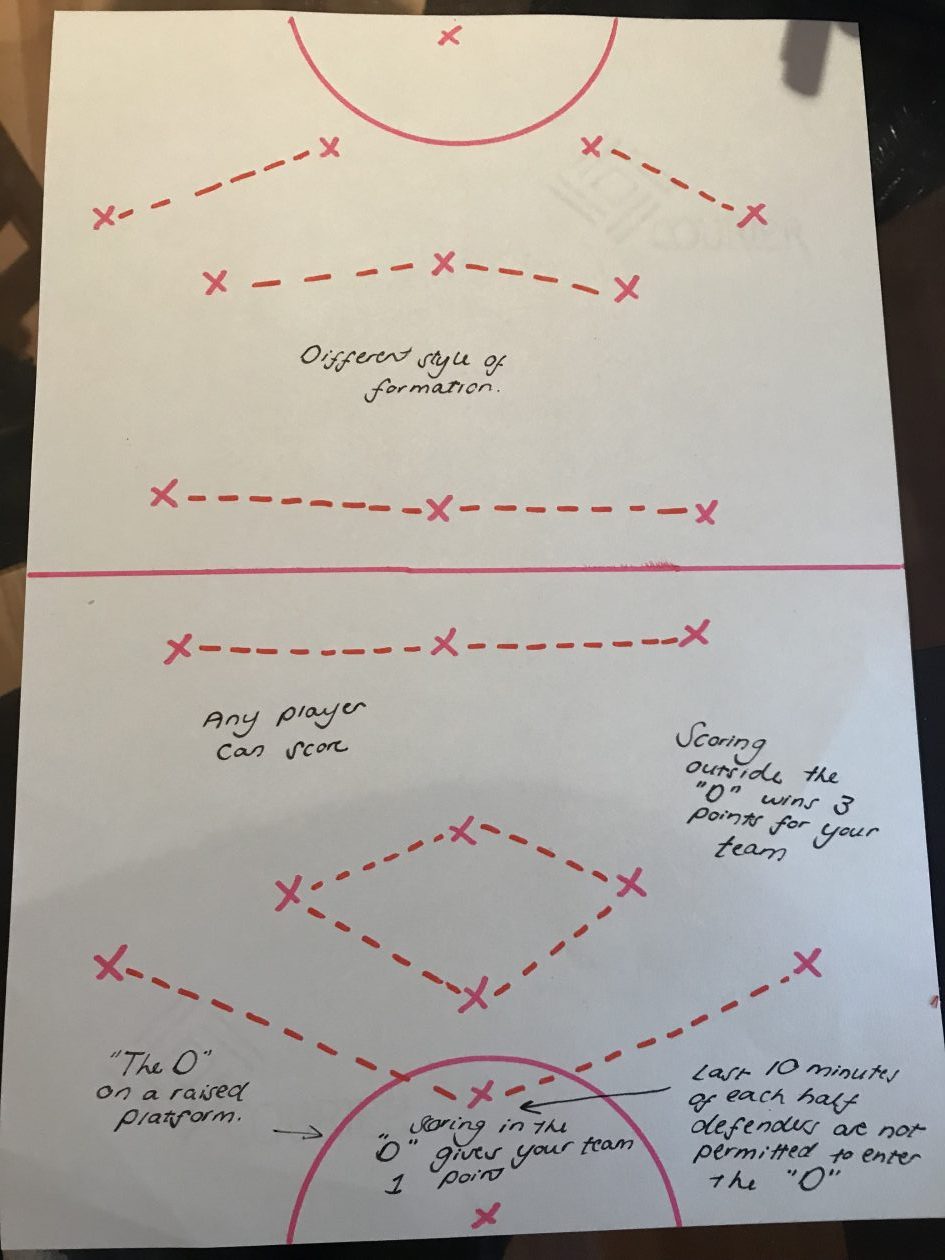Discovering Maths in Sport

Image credit: Thomas (2012) https://plus.maths.org/content/spinning-perfect-serve
As part of my journey in discovering mathematics, I have become aware of the fact that maths really is everywhere. So far, we have touched on maths in art, stories, music, computing, gambling and sport. In particular I’ve enjoyed looking at these aspects from a very open perspective, questioning the mathematical theory behind the subject. This was especially interesting to look at in relation to sport, where we took a step back from the rules of sport and completely reinvented them.
Firstly, it is important to understand how mathematics relates to sport. There are many specific examples, such as The Magnus effect in tennis which relates to how the ball spins as it moves through the air (Thomas, 2012). A similar example can be seen in badminton where the shuttlecock obeys Newton’s laws of motion. Its acceleration is controlled by the downward force of gravity and a “drag force” from the air that is proportional to the square of the shuttlecock’s speed through the air (The Plus Olympic calendar, 2012).
Although these are very specific examples, we can also see how particular aspects of mathematics relate to nearly all sports: the physics of sport, sporting strategy, architecture and infrastructure, predicting results and sporting statistics, scoring and ranking, and betting and odds (Teacher package: Mathematics in sport, 2010).
Something which we considered during our workshop was whether the popular sports we know well are structured in the best way possible. My group looked at the example of hockey. At first we struggled to come up with ways of improving the sport as we already thought that the rules and strategies of the sport were fair. Then we were posed with the question: what would make hockey more exciting watch? This started to make us think more creatively…
Firstly, we thought about the pitch layout – like most pitches the hockey field is flat. We considered increasing the difficulty of the sport by raising the surface of the area where the goal is (this area is known as the “D” due to its shape – another mathematical link!) If there was a platform of even just a few inches, this would require the players to be able to lift (or chip) the ball and retain control quickly after to avoid defenders “stealing” the ball. One of the key rules for hockey is that you are only allowed to score when you are in the “D”. We thought the game would be more exciting if players were able to score from anywhere on the pitch, meaning that defenders would always need to be alert. We thought we could also change the scoring system so that if players score outside the “D” they can win their team 3 points instead of 1.
Moreover, we thought of a way of motivating players to score more goals. We decided that for the last 10 minutes in each half (hockey is a game of two 35 minutes halves) the defenders would not be allowed to defend inside the “D”. This means that if the player manages to get past the defenders, it is 1v1 scenario with the goal keeper. This would allow the player to show off their scoring skills/abilities.
Below is an illustration of our reinvention of hockey where the crosses represent the players and dashed lines represent their formation:

The ideas that other groups developed also sparked a lot of imagination. I really liked the idea one group came up with in relation to Netball. They imagined what the sport would look like if there were 3 baskets of different heights (each worth different points) instead of just one. Like us, they also looked at the layout of the court but decided to make it larger, to encourage more changeover throughout the match.
This was an extremely engaging workshop which really allowed me to see sport from a different perspective than how I usually would (as very structured and fixed). As we have discovered, mathematics is not always fixed and there are often many ways of doing mathematics. I think this is a lesson I would like to look at in the future as a teacher – to allow the pupils to experiment with sports that they love (see previous blog post about mathematics in dance) (Coventry, 2017). It is also a great way for the children to understand the links and relevance of mathematics.
References
Coventry, J. (2017) Discovering Maths in Dance. [Blog] Glow. Available at: https://blogs.glowscotland.org.uk/glowblogs/jceportfolio/2017/09/14/discovering-maths-in-dance/ [Accessed 8 Nov. 2017].
Teacher package: Mathematics in sport. (2010). Plus. [online] Available at: https://plus.maths.org/content/teacher-package-mathematics-sport [Accessed 8 Nov. 2017].
The Plus Olympic calendar. (2012). Plus. [online] Available at: https://plus.maths.org/content/plus-olympic-calendar-monday-6th-august [Accessed 8 Nov. 2017].
Thomas, R. (2012). Spinning the perfect serve. Plus. [online] Available at: https://plus.maths.org/content/spinning-perfect-serve [Accessed 8 Nov. 2017].

